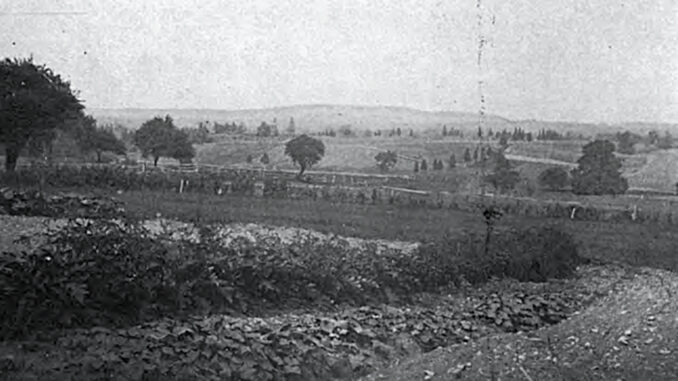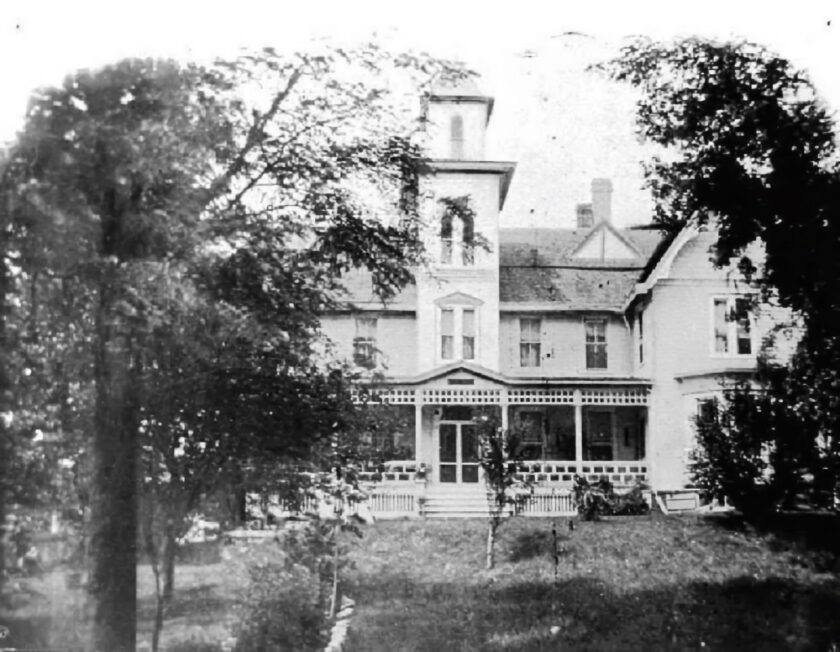
RIVER VALE, N.J.—The warmest week so far this year. Pasture is growing rapidly, potatoes about all planted, oats coming up. Warm rain is needed. The wheat and rye are looking fine and the outlook for fruit is good. Highest temperature for the week was 73 degrees. Lowest, 44 degrees.
That was the latest from River Vale as reported by Abram C. Holdrum during the first week of May 1895. In addition to his standing as the largest landowner in town at the turn of the 20th century, Holdrum (1837–1909) corresponded for the New Jersey State Weather Service and the vice president of the Bergen County Board of Agriculture. His now 130-year-old dispatches provide a glimpse into a vanished way of life.
In June he followed up with, “Weather and soil in condition for growth of all vegetation. Potato bugs are plentiful. Rye, oats, and corn are looking fine. Strawberries are ripening fast and picking is going on. Grass is in fine condition and promises a good crop. Blackberries in full bloom.”
Much of the food grown here would be destined for urban markets in New York City and Paterson, and local families relied on a good crop to make their living. Corn, potatoes, apples, pears, cherries, grapes, cabbages, beets, strawberries, blackberries, and more would be shipped in crates by horse-drawn wagon and railroad. This lifestyle was once ubiquitous in our communities, and up through the early 20th century the majority of River Vale residents were farmers.
The River Vale of the 1890s was a far cry from the community residents know and love today. The photograph above is typical of the landscape as it looked then.
This view captured on the Holdrum Farm shows the massive amount of open space that existed in 1899. It is possible that the large hill in the background is the ridge beyond Pascack Valley High School in Hillsdale. Holdrum lived in a beautiful mansion that stood on Rivervale Road north of the present-day DPW complex. It was the showpiece of a farm that stretched for over 160 acres.

Wide open spaces and farmland have given way to suburban development, and small country lanes have turned into paved roadways meant for automobiles rather than horses and carriages. The population of just 266 people in 1899 (as per the 1900 census) created a much different atmosphere than today’s tally of nearly 10,000.
While the name “River Vale” was being used to denote this region in the 19th century, the township itself did not yet exist. The land that now comprises River Vale was part of the Township of Washington until 1906. Here Mr. Holdrum figures into our story once again. In addition to being a farmer and the postmaster of Westwood, he was a freeholder and state assemblyman. He introduced the legislation that led to the incorporation of River Vale.
Holdrum is also credited with capturing the lowest temperature ever recorded in New Jersey. He had a government thermometer at his farm that measured 34 degrees below zero in January 1904. The record stands over 120 years later.
River Vale’s Holdrum Middle School is named for his son, Garret S. M. Holdrum, who was a longtime president of the school board.
